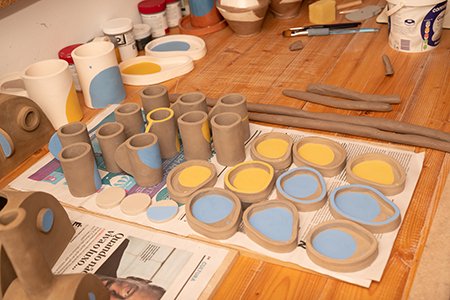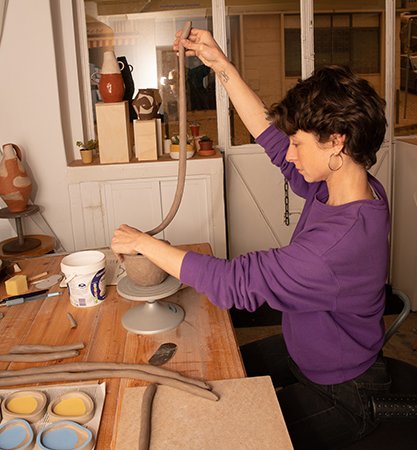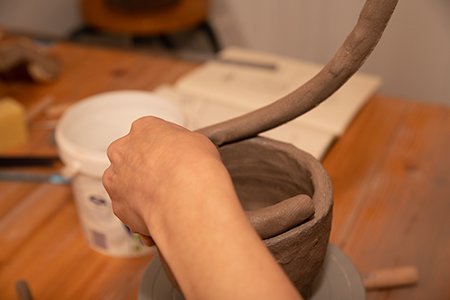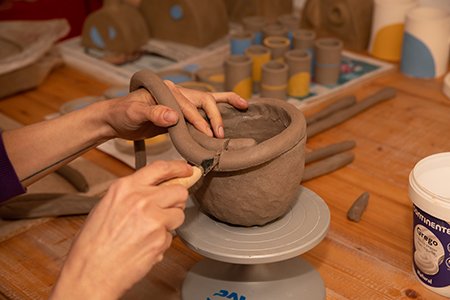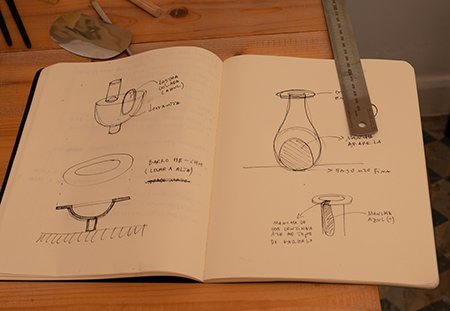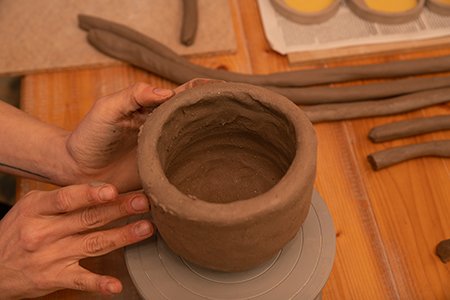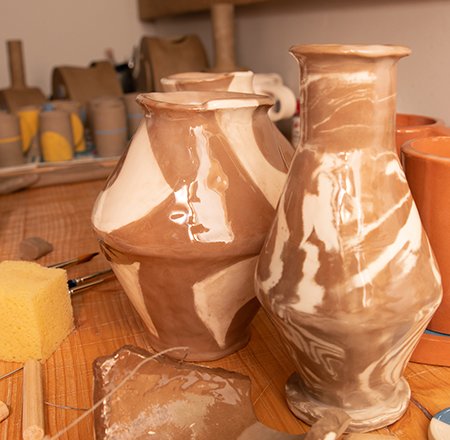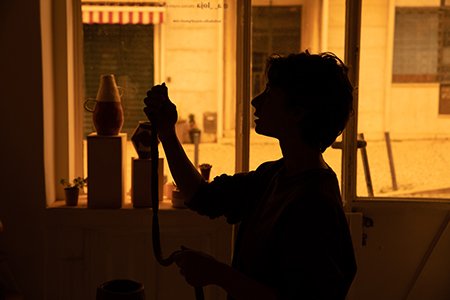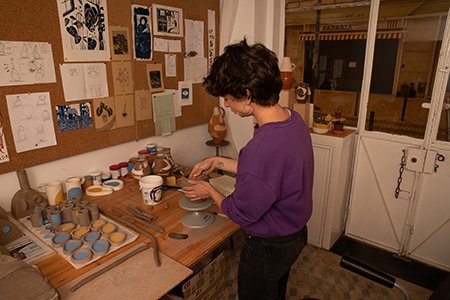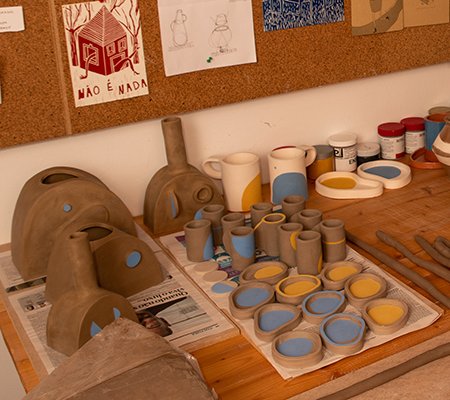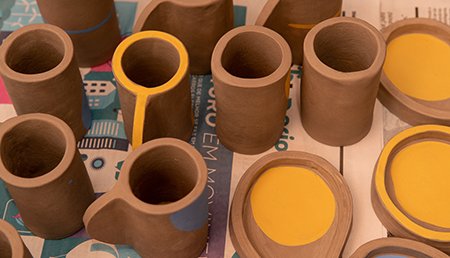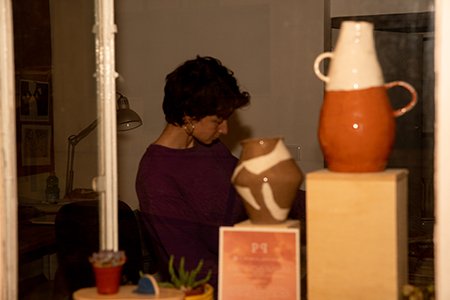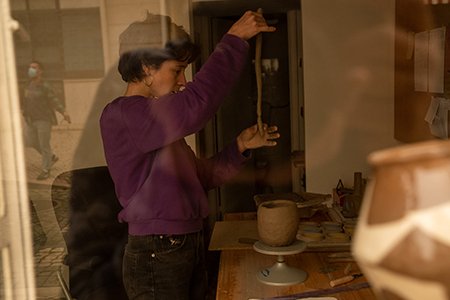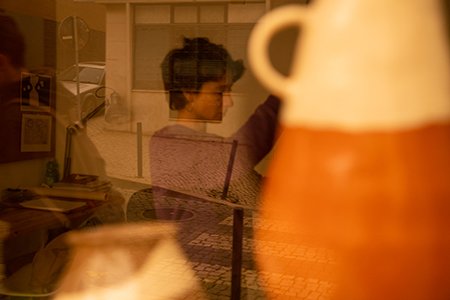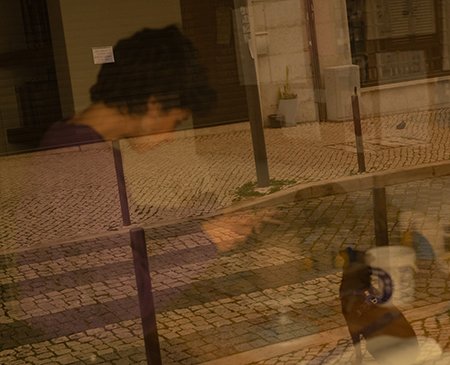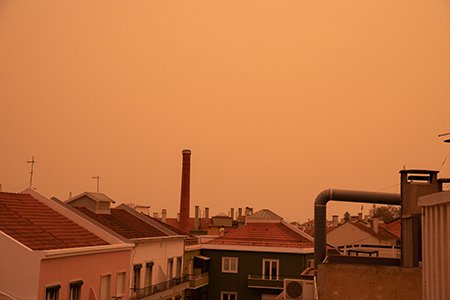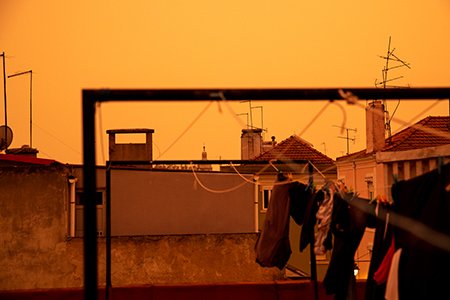Unearthing Ceramics with Tatiana Guerra Ferreira
There are many reasons why Lisbon, Portugal is my artistic home. The natural light that reflects from the Tejo River and the Atlantic bathe the city in ethereal light no matter the time of year is a one reason. But another is the country’s artistic culture. Portugal’s artists have the gift of patience. A trait found in both their traditions and history, this poised sense of unhurried precision that strives for artistic honesty rather than rigid perfection.
A couple of weeks ago, I had the opportunity to spend time with ceramics artist, Tatiana Guerra Ferreira, at her atelier in the Ajuda neighborhood of Lisbon.
I would call our interview day – auspicious. Tatiana’s ceramic practice is traditional, using a non-motorized pottery wheel. Among the many different types of clay in her studio, is the famous red clay from the Alentejo area that has been molded into vases and bowls since Roman times.
And the afternoon that I walked down to her studio, most of the southern regions of Portugal were in the midst of a Sahara sandstorm. This weather phenomenon created a yellow-orange curtain of storm clouds that hid the sun but retained its light. The air had materialized into a silty grit that you could feel in the back of your throat. This sand from Africa carried into Lisbon, the Alentejo, the Algarve as it has for centuries.
This African sand that had long ago settled into the Alentejo clay was now being kneaded into shape by Tatiana. I was witnessing nature and artistry complete a cycle that had taken generations to create.
Tatiana works with clay but is also an architect and interior designer. She grew up about 15 kilometers outside of Lisbon in the town of Rio de Mouro. In her teenage years, she spent many hours in her secondary school’s art rooms, drawing, painting, and at the potter’s wheel. Studying at the University of Lisbon in architecture, she moved away from ceramic arts. But in the subsequent years, she was drawn back to the medium.
I watched her create a vase from thick strands of clay that wound one on top of the other. She pressed and pinched the layers together. Tatiana describes her ceramic practice as “utilitarian and decorative.” She builds her pieces slowly without the help of a motorized potter’s wheel, which would make her work less unique and more factory-formulaic.
Her atelier is modest with a three-table workspace below and a smaller storage/holding area in the loft. But her work has large aspirations – not for fame but in the imaginings. She has a collection of expresso cups and saucers, named “Montanha e Sol” because the design aesthetic reminds her of the “Mountain and Sun.” Simple yet so elegantly grand. She calls her brand, Pareidolia, and her collections does inspire me to look for patterns, shapes, and meanings within her abstract designs. She describes her process as meditative and her gestures molding the clay emotive. The potter’s wheel has taught her how to express herself and how to embrace aloneness.
To complete a cycle of her artist’s wheel, she has opened up her atelier for Saturday morning classes, and beginning this month (April 2022), she’ll begin teaching the art of linocut. Also called, lino-printing, it’s a variant of the woodcut printing process. A medium she mastered during her time away from ceramics. In her studio, are some prints from her linocuts, taken from a book she published about her emotional journey after graduating from university.
Tatiana’s work centers on the natural world and aims to encompass our senses: smell, taste, touch, sight, and the sound of the metal wheel slowly turning with her hand.
I cannot help but think of José Saramago’s novel, A Caverna (The Cave). Cipriano Algor, the story’s protagonist, is a ceramics artisan whose trade is becoming obsolete due to factories and plastics. He goes on a journey to find meaning for himself and his family. When I step out from Tatiana’s ceramics studio, I cannot help but think that Saramago’s character has found historical and cultural redemption in her pieces.
To learn more about Tatiana’s process and her work, follow her on Instagram: @tguerraferreira - @_ceramica_paredolia_ and @a_loja

